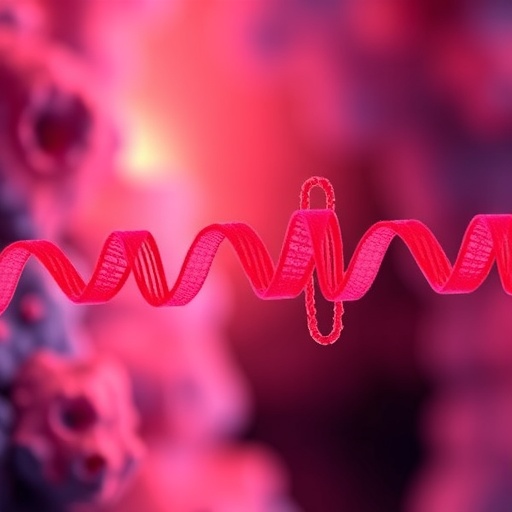In the world of genetic engineering, the current focus is on overcoming the inherent limitations of adeno-associated virus (rAAV) vectors, particularly their capacity constraints when it comes to delivering CRISPR components for therapeutic applications. With the advent of compact Cas proteins, this challenge is gradually being addressed. For instance, hypercompact CRISPR systems like Campylobacter jejuni Cas9 (CjCas9) and Staphylococcus aureus Cas9 (SaCas9) have been pivotal in facilitating efficient in vivo editing. These variants are significantly smaller compared to traditional Cas9, which opens the door for their packaging within rAAV vectors. This promising advancement can potentially change the landscape of gene therapy, offering new hope for treating genetic disorders directly at the cellular level.
One of the most compelling examples of this technological leap is seen in the application of rAAV8 vectors to deliver the tiny rAAV8 vectors encoding CasMINI_v3.1/ge4.1 that target the Nr2e3 gene, leading to substantial transduction in retinal cells. In a specific study involving RhoP23H/+ mice, which serve as a model for retinitis pigmentosa (RP), researchers recorded transduction efficiencies exceeding an impressive 70%. Post-administration, notable improvement in cone photoreceptor function was observed, which was critical in validating the capability of these compact Cas systems to facilitate effective genome editing. The implications of such enhancements are profound, especially considering the societal implications of restoring vision potentially lost due to inherited retinal diseases.
Another trailblazing innovation includes the use of rAAV9 vectors to deliver the compact adenine base editor Nme2-ABE8e, derived from Neisseria meningitidis. This specific application targets and corrects mutations within the Fah gene responsible for hereditary tyrosinemia type 1 (HT1). While the overall editing efficiency may seem modest at 0.34%, what’s remarkable is that it managed to restore 6.5% of FAH+ hepatocytes—above the therapeutic threshold required for meaningful restoration of normal function in affected cells. This example showcases the promising potential of employing all-in-one rAAV-mediated approaches in clinical settings for complex genetic disorders, effectively harnessing the power of genetic engineering to mend the underlying causes of diseases.
The advancements in delivering CRISPR systems using rAAV vectors establish a noteworthy foundation for the ongoing development of gene-editing therapies. With dual rAAV vectors that separate the Cas9 protein and guide RNAs onto different vectors, researchers are overcoming the previously limiting size issue associated with single rAAV vectors. This dual-vector delivery approach has resulted in the successful and safe restoration of full-length dystrophin expression within treated muscles, case numbers that signify a breakthrough in the treatment of disorders such as Duchenne muscular dystrophy. The therapeutic implications of this model demonstrate its broader applicability in treating genetic defects associated with large genomic alterations.
Despite these successes, the challenge remains to ensure efficient co-transduction of the dual vectors into target cells. The effectiveness of genome editing hinges largely on the simultaneous delivery and successful co-administration of both rAAV vectors. Studies continue to explore innovative strategies to ensure that both the nuclease and gRNA reach their intended destination together, maintaining high editing efficiency and efficacy. To this end, advancements in vector design and modulation strategies are gaining momentum, revealing their therapeutic potential in managing conditions that are associated with larger genome alterations.
In a further evolution of vector technology, the development of protein trans-splicing rAAV vectors is rapidly becoming a frontier for addressing CRISPR delivery limitations. By employing inteins—self-catalyzing protein elements capable of splicing—they can code for split Cas proteins that reassemble into a functional enzyme. In the context of treatments, this strategy has demonstrated therapeutic efficacy in preclinical studies for conditions such as amyotrophic lateral sclerosis, where introducing a split cytidine base editor improved neurologic function. Furthermore, the versatility of rAAV vectors enables the flexibility of selecting split sites, facilitating a renewed approach to gene therapy.
A notable aspect of the protein trans-splicing rAAV system involves its capacity to facilitate efficient prime editing—a method that offers potentially more precise editing compared to traditional CRISPR systems. Recent studies have highlighted its application in mouse brain and liver models. The success of this method underlines the multifaceted capabilities of rAAV vectors and suggests ongoing refinement to enhance editing precision across various tissue types. With the ability to effect corrections at deeper genetic levels, this evolution serves to better address a spectrum of genetic disorders.
Moreover, RNA trans-splicing rAAV vectors represent an additional layer of innovation, offering new possibilities for CRISPR delivery systems. Instead of relying on protein-level reconstitution, these vectors facilitate reconstitution at the RNA level, thereby eliminating concerns around misfolded protein intermediates. This new approach paves the way for flexibility in selecting split sites, which—when coupled with successful vector delivery—yields promising results across diverse tissues. Clinical applications of this technology encapsulate the continuing evolvement of gene-editing solutions and their real-world applicability, providing optimism for future gene therapeutic endeavors.
As evidence mounts confirming the reliability and versatility of these mRNA trans-splicing vectors, their application across different tissues usher significant advancements in genetic treatment capabilities. Noteworthy outcomes achieved through this method have included restoring visual function in models of retinitis pigmentosa and attaining substantial levels of gene editing in various organs. Each proof-of-concept study further exemplifies the clinical potency of mRNA trans-splicing systems, underscoring potential applications in treating genetic defects across broad contexts.
Investigators are acutely aware that the future of gene therapy relies heavily on optimizing these intricate mechanisms within rAAV vectors. In a pivotal development known as REVeRT (reconstitution via mRNA trans-splicing), researchers are leveraging RNA trans-splicing technology to provide more efficient delivery channels for CRISPR components. This model effectively enables rAAV vectors to transcript their respective pre-mRNA into mature gene-editing proteins, enhancing function and potency across patient populations. The REVeRT system has demonstrated a higher efficiency by avoiding reliance solely on ITR-mediated concatemer formation, marking an exciting evolution in therapeutic delivery systems.
The combination of continued exploration into compact Cas proteins, innovative vector design, and efficient reconstitution pathways collectively forms a formidable response to the long-standing challenges in CRISPR-mediated gene therapy. As the research landscape progresses, bridging theoretical advancements with practical clinical applications brings tangible hope for numerous genetic disorders. Advancements made through these technologies are not solely reshaping genetic engineering; they are catalyzing the future of medicine itself, with the potential to revolutionize how we approach complex diseases. Ultimately, the present breakthroughs signal the dawn of a new era in genetic therapy, where the seamless integration of innovative methodologies promises a brighter future for individuals grappling with genetic afflictions.
The methods and technologies developed over recent years are thus not mere theoretical constructs. They represent a pivotal moment in the quest for effective genetic interventions, heralding promising pathways toward treating disease and improving health outcomes. The ongoing efforts underscore the necessity for continued investment in this field, as each breakthrough enhances our understanding of gene editing possibilities, opening doors for future exploration in complex genetic landscapes. In this light, the convergence of compact nucleases and cutting-edge delivery systems is shaping the next generation of gene therapies tailored specifically to the needs of patients, paving the way for durable and effective solutions in molecular medicine.
Subject of Research: Gene editing with rAAV vectors using compact nucleases for therapeutic applications.
Article Title: Therapeutic in vivo genome editing: innovations and challenges in rAAV vector-based CRISPR delivery.
Article References:
Gil, JS., Lee, S. & Koo, T. Therapeutic in vivo genome editing: innovations and challenges in rAAV vector-based CRISPR delivery.
Gene Ther (2025). https://doi.org/10.1038/s41434-025-00573-2
Image Credits: AI Generated
DOI: 12 November 2025
Keywords: CRISPR, rAAV vectors, gene therapy, genome editing, compact nucleases, trans-splicing technology.
Tags: Campylobacter jejuni Cas9 applicationscompact Cas proteins for genetic engineeringCRISPR gene editinggene delivery for retinal disordersgenetic disorders treatment advancementshypercompact CRISPR systemsinnovative gene editing techniquesNr2e3 gene targetingrAAV vectors in gene therapyretinitis pigmentosa researchStaphylococcus aureus Cas9 technologytransduction efficiency in gene therapy





